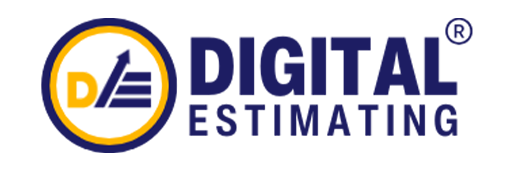When making choices in construction, quantity takeoffs are very important. They are essential to the wants and goals of the project. Work is manageable for quantity takeoff. How much and how good the takeoff information is can make or break a project. Keeping data well is essential because wrong cost figures can affect the whole building process.
Models and plans define building work requirements. A cost estimator does this when they look at plans and drawings to determine how much a building job will cost. Different names know number takeoffs, but most people use them similarly.
Importance of quantity takeoffs:
Quantity takeoff accuracy impacts construction costs. Here are some essentials for it:
- Records of costs: They tell you how much you need to spend on building, which helps you make decisions and stick to your budget—the correct number of takeoffs allowed for costs that came out of the blue.
- Communication: Everything in the building is based on price. Every client wants to make as much money as possible from their deal. Giving clients exact cost estimates helps you talk to them better. People will trust you more after reading this. The client will keep track of the project’s cost.
- Getting more bids: To beat your competitors and get the proper bids, consider how much it will cost. Estimators always give correct takeoffs, bringing more bids and faster work. Number takeoffs can get you more bids when you look at them, even though they are annoying.
- Managing your time: Quantity takeoffs change project budgets and choices made by the client and contractor. It’s hard to pick a service, but fixing mistakes faster is easier if you do the takeoffs right. Projects stay on track because of cost overruns, so everything works well.
Ways For Quantity Takeoff
Tech has changed how quantity takeoffs are done in the building business. People are still part of takeoffs. We have two big takeoffs, which you can see below.
Manual Takeoffs
It is the first type of material takeoff. Even though estimators have Excel or Microsoft Word, construction cost estimators still use hand takeoff to determine how much something will cost. These papers help the estimator determine how much work needs to be done to build a building. The estimate must review the project plans to ensure they meet the needs.
Pros of Manual Takeoffs
Digital takeoffs are better than paper ones in some ways, but you can use something else instead of a cost estimate. Here are some benefits of planned takeoffs:
- You can get helpful information from cost estimators with much knowledge.
- The digital takeoffs are checked very well.
Cons Of Manual Takeoffs
These things can’t be done with hand takeoffs:
- If you do takeoffs by hand, you can save time because you must type numbers into a chart by hand.
- Also, manual takeoffs are less accurate than digital ones.
Digital Takeoffs
Digital takeoffs use computers and database programs. Now, the building industry uses them. It works faster and better than people. Scanners measure and enter images into computer systems for digital takeoffs. Because digital takeoffs are hard to understand, a trained professional must use cost-based results in software programs.
Why digital takeoffs are good
- Digital work is more accurate than handwork. The patterns are what they know, which makes things more difficult. They looked at everything because the cost estimate shows that.
- It cuts down on the cost of labor for quantity takeoff and gives the provider more time to think about other options.
- For digital takeoffs, you don’t need to know as much as for manual ones. People who figure out costs by hand must read plans and pictures well.
Cons Of Digital Takeoffs
This is what’s wrong with Digital Takeoffs:
- Digital takeoffs might not be correct if guesses, counts, or measurements are off.
- Large drawings can be complex to scan. The scanner is massive, so the data must be ready immediately.
What to include in it?
Everyone who plans front-end projects should do this. It begins with preconstruction and bidding to make a fair deal with accurate information. First, add all prices and materials, regardless of the size of the work.
Bids that are correct help workers get the job done. Keeping track of the number of takeoffs might require more people, depending on the type of job. It would help to guess how much something would cost if you had information, skill, and patience. It’s essential for project plans and significantly impacts how well the project turns out.
What Does It Have?
Quantity takeoff is a math problem. On the output side, values and numbers must be changed from the input side to the output side. The total cost is the base amount plus labor, equipment, and company costs. Here are some examples of rates for taking off quantities
- When you’re taking off, it’s easy to do things like count units. When cost estimators plan projects, they track how much each unit costs.
- The linear length is different for each object, such as pipes, steel, and wood. It’s hard to determine the unit size for these things, so unit length is used instead. They find out both the gross cost of weight and the unit length.
- Finding the surface area is also a two-dimensional task, like the brickwork case. People who work out costs use the length and width to find the surface area.
- How much something weighs is a big part of how much it costs to ship. Often, steel tons and backfill weight are included when you measure takeoffs.
- Launching many things has to do with three dimensions.
Quantity takeoffs are an essential part of a winning bid. The more you know about these, the better your bid-to-hit number will be. You should do the takeoff process by hand, which usually leads to mistakes. We suggest using the digital way because it works better.


